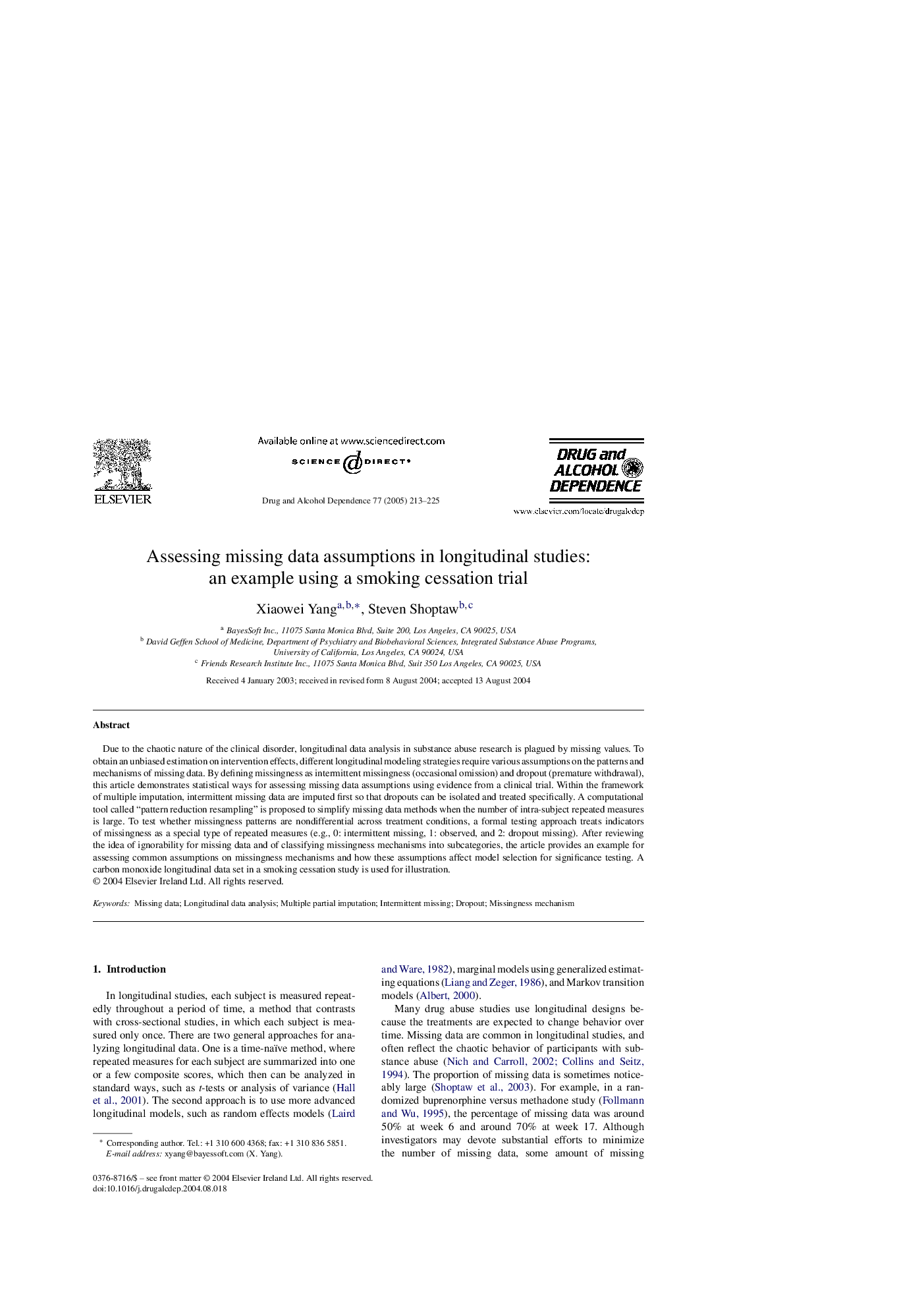| Article ID | Journal | Published Year | Pages | File Type |
|---|---|---|---|---|
| 10510223 | Drug and Alcohol Dependence | 2005 | 13 Pages |
Abstract
Due to the chaotic nature of the clinical disorder, longitudinal data analysis in substance abuse research is plagued by missing values. To obtain an unbiased estimation on intervention effects, different longitudinal modeling strategies require various assumptions on the patterns and mechanisms of missing data. By defining missingness as intermittent missingness (occasional omission) and dropout (premature withdrawal), this article demonstrates statistical ways for assessing missing data assumptions using evidence from a clinical trial. Within the framework of multiple imputation, intermittent missing data are imputed first so that dropouts can be isolated and treated specifically. A computational tool called “pattern reduction resampling” is proposed to simplify missing data methods when the number of intra-subject repeated measures is large. To test whether missingness patterns are nondifferential across treatment conditions, a formal testing approach treats indicators of missingness as a special type of repeated measures (e.g., 0: intermittent missing, 1: observed, and 2: dropout missing). After reviewing the idea of ignorability for missing data and of classifying missingness mechanisms into subcategories, the article provides an example for assessing common assumptions on missingness mechanisms and how these assumptions affect model selection for significance testing. A carbon monoxide longitudinal data set in a smoking cessation study is used for illustration.
Related Topics
Life Sciences
Neuroscience
Behavioral Neuroscience
Authors
Xiaowei Yang, Steven Shoptaw,
